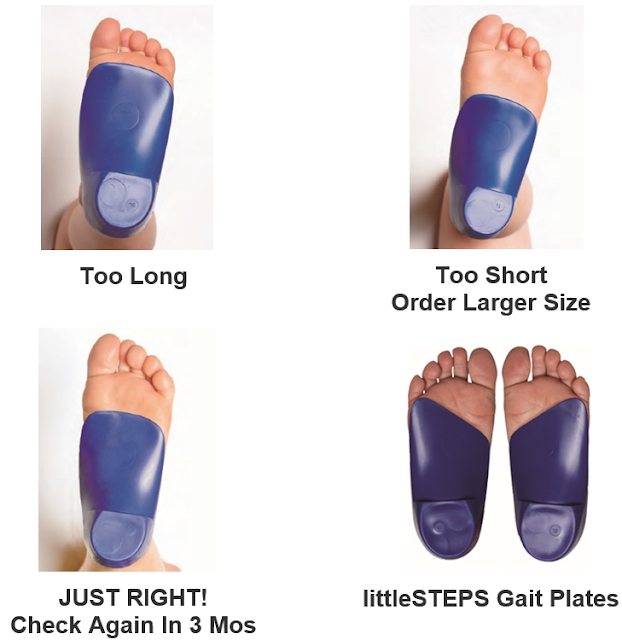Advancing Comfort and Support: The Popularity of Prefabricated Foot Orthotics
In the pursuit of enhanced comfort, improved foot alignment, and
efficient injury prevention, foot orthotics have become an indispensable tool.
These inserts, designed to support the feet and correct biomechanical issues,
have traditionally been custom-made to fit the unique contours of an
individual's feet. However, with the advent of prefabricated foot orthotics, a
new era has dawned, revolutionizing the accessibility and affordability of this
invaluable technology. In this blog post, we will explore the world of
prefabricated foot orthotics, discussing their benefits, limitations, and their
impact on foot health.
Understanding Foot Orthotics
Foot orthotics, also known as shoe inserts or insoles, are specially
designed devices that are placed inside shoes to provide support, correct
structural abnormalities, and alleviate pain. They are primarily used to
address foot-related issues such as overpronation (excessive inward rolling of
the foot), flat feet, high arches, plantar fasciitis, and other conditions
affecting foot alignment.
Traditionally, custom-made orthotics have been the gold standard for
addressing specific foot issues. These are created by taking impressions of the
patient's feet and tailoring the orthotic to their unique requirements.
However, this process can be time-consuming and costly, often requiring visits
to healthcare professionals, such as podiatrists or orthotists.
Enter Prefabricated Foot Orthotics
Prefabricated foot orthotics are a relatively recent development that
offers a standardized solution to common foot problems. These orthotics are
manufactured in various sizes and shapes, designed to fit a range of foot sizes
and arch types. They are readily available, allowing individuals to purchase
and use them without the need for a professional fitting.
Benefits of Prefabricated Foot Orthotics
- Affordability: One of the primary advantages of
prefabricated foot orthotics is their cost-effectiveness. Custom orthotics
can be quite expensive due to the involved process in designing and
manufacturing. Prefabricated options provide an affordable alternative,
making foot orthotics more accessible to a wider population.
- Accessibility: Prefabricated orthotics are
readily available from various retailers, eliminating the need for
specialized appointments and long waiting times. This accessibility
ensures that individuals can find relief for their foot issues promptly.
- Convenience: With prefabricated foot
orthotics, individuals can purchase and use them immediately without
having to wait for the custom-made versions to be produced. They can be
easily transferred between different pairs of shoes, enabling users to
enjoy their benefits across various activities and footwear choices.
- Versatility: Prefabricated orthotics often
come in a range of sizes, arch heights, and designs to accommodate
different foot shapes and conditions. They can address common issues such
as arch support, cushioning, and alignment, providing a versatile solution
for a wide range of foot-related problems.
Limitations of Most Prefabricated Foot
Orthotics
- Lack of Customization:
The main drawback of prefabricated foot orthotics is their inability to
address individual foot irregularities with the same precision as custom
orthotics. While they offer a range of options, they may not provide the
exact level of support or correction needed for more complex foot
conditions.
- Specificity: Prefabricated orthotics are
designed to address common foot problems and provide general support.
However, certain individuals with more severe or specific conditions may
require custom-made orthotics to ensure optimal results and comfort.
- Trial and Error: Finding the right prefabricated
orthotics may involve some trial and error. Individuals may need to try
different brands, sizes, or designs before finding the one that suits
their feet best. This experimentation can be time-consuming and
frustrating for those seeking immediate relief.
The Quadrastep Prefabricated Orthotic
System is often considered a top choice in prefabricated foot orthotics for
several reasons:
Customization: The Quadrastep system
offers a high degree of customization, even within a prefabricated format. It
takes into account the individual's specific foot type, arch height, and
alignment to provide a more tailored solution compared to generic prefabricated
orthotics. This customization helps improve comfort, support, and overall
effectiveness.
Evidence-based design: The Quadrastep system is based on years of research and clinical
experience. It incorporates the principles of the Root biomechanical theory,
which is widely recognized and respected in the field of podiatry. The design
aims to address common foot problems and improve biomechanical alignment,
thereby promoting optimal foot function and reducing pain.
Versatility: The Quadrastep system
offers a range of orthotic options to accommodate different foot types and
conditions. It categorizes feet into six different types (Q1-Q6) based on their
specific alignment characteristics and provides corresponding orthotics for each
type. This versatility allows for a more precise fit and targeted treatment for
various foot pathologies.
Ease of use: Being prefabricated, the
Quadrastep orthotics are ready to use without the need for complex measurements
or molds. This convenience saves time and effort, making them more accessible
for both patients and practitioners. They can be easily fitted into different
types of footwear, promoting patient compliance.
Professional endorsement: The Quadrastep system has gained recognition and endorsement from many
podiatrists and healthcare professionals. Their positive experiences with the
system's effectiveness in managing foot problems contribute to its reputation
as a top choice in the field.
Prefabricated foot orthotics have brought about a significant shift in
the world of foot health. While they may not provide the same level of
customization as their custom-made counterparts, they offer a cost-effective,
accessible, and convenient solution for many common foot conditions. For
individuals with mild to moderate foot issues, prefabricated orthotics can
provide the necessary support, alignment correction, and pain relief. However,
it is essential to consult a healthcare professional, such as a podiatrist or
orthotist, to ensure the best possible outcome for more severe or complex foot
conditions. With advancements in materials and manufacturing techniques,
prefabricated foot orthotics are likely to continue evolving, enhancing foot
health for a broader range of individuals in the years to come.







